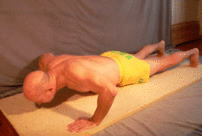 The Twin Cities surpassed Washington DC as the fittest city according to the American College of Sports Medicine’s 2011 list of America’s fittest cities. WebMD provided a great summary of the report which included this paragraph:
The Twin Cities surpassed Washington DC as the fittest city according to the American College of Sports Medicine’s 2011 list of America’s fittest cities. WebMD provided a great summary of the report which included this paragraph:
Even though the Twin Cities reduced park-related expenditures in 2011, the area’s percentage of parkland is still above average, and so is its percentage of recreational facilities other than swimming pools, according to a report from the American College of Sports Medicine, which was made possible by a grant from the Indianapolis-based WellPoint Foundation.
It is no surprise that Portland made the top 5, since Minneapolis and Portland swap the best biking city designation. And actually none of the top 5 are that surprising. Here is the list (with their score and 2010 rank):
| 1. Minneapolis-St. Paul | 77.2 | 3 |
| 2. Washington, D.C. | 76.8 | 1 |
| 3. Boston, Mass. | 69.1 | 2 |
| 4. Portland, Ore. | 67.7 | 5 |
| 5. Denver, Colo. | 67.6 | 6 |
If you want to see a pdf of the Twin Cities data you can click here. Other cities are available at the American Fitness Index website.
Here is a list of the Twin Cities strengths:
- Lower percent unemployed
- Higher median household income
- Lower percentage of households below poverty level
- Higher percent of any physical activity or exercise in the last 30 days
- Higher percent physically active at least moderately
- Lower percent currently smoking
- Higher percent in excellent or very good health
- Lower percent with asthma
- Lower percent with angina or coronary heart disease
- Lower percent with diabetes
- Lower death rate for cardiovascular disease
- Lower death rate for diabetes
- Higher percent of city land area as parkland
- More farmers’ markets per capita
- Higher percent using public transportation to work
- Higher percent bicycling or walking to work
- More ball diamonds per capita
- More dog parks per capita
- More park playgrounds per capita
- More golf courses per capita
- More park units per capita
- More recreation centers per capita
- More tennis courts per capita
- Higher park-related expenditures per capita
- Higher level of state requirement for Physical Education classes


![Reblog this post [with Zemanta]](https://i0.wp.com/img.zemanta.com/reblog_e.png?w=625)

